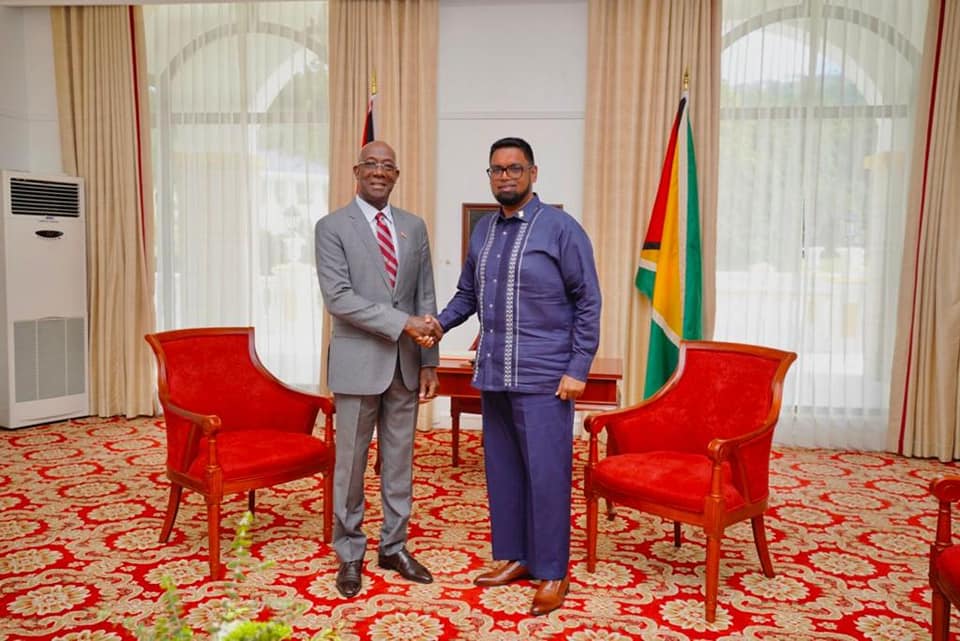Guyana’s Head of State, Dr. Mohamed Irfaan Ali and Trinidad & Tobago’s Prime Minister, Dr. Keith Rowley advanced talks Thursday regarding energy security for the region.
This was revealed by both leaders during a joint press conference in Port of Spain. Bilateral discussions were held at the Diplomatic Centre in the capital.
Mr. Rowley explained that the said talks were premised on the previous establishment of a committee by the United States which aims to examine ways and means by which the Caribbean Community (CARICOM) and the Joe Biden-led administration could collaborate on energy security matters facing the region.
The Prime Minister, a Co-Chair on the committee, said a decision was taken on Thursday morning for technical personnel representing CARICOM to meet and produce by September’s end, recommendations to be considered by the US on regional energy security and the role each country’s natural resources can play in ensuring sustainable energy output. Suriname, Guyana, and T&T will be the focal point for this area.
President Ali said the intention is to ensure a strategic approach is taken to integrate the advantages of each nation and use same to build out a sound path towards energy sustainability, resilience and reliance for the region. “This is a big part of our agenda with the USA, so, we can have a pathway to energy security that includes all the assets we have within the region,” the Head of State added.
It was in June last that President Biden and Vice President Kamala Harris met with leaders of the Caribbean Community and the Dominican Republic at the Ninth Summit of the Americas to develop a plan to partner in addressing the unique vulnerabilities and urgent economic challenges facing these countries.
Both US officials committed to working with CARICOM and the Dominican Republic to form three high-level committees tasked with developing immediate and concrete, joint, and near-term solutions.
Building on Vice President Harris’ April 29, 2022, meeting with these Leaders, the United States launched the U.S.-Caribbean Partnership to Address the Climate Crisis 2030 (PACC 2030) to facilitate renewable energy infrastructure development, including by increasing access to financing, and to bolster the region’s resilience to climate based natural disasters. The joint effort will facilitate collaboration between the US private sector and Caribbean companies to support renewable energy infrastructure project development from concept to financing, including through technical assistance and blended finance tools to create Caribbean equity in energy projects.
Under PACC 2030 and as part of the Americas Partnership for Economic Prosperity, the United States government said it will work with international financial institutions to develop financial tools that respond to the Caribbean’s unique challenges, including by exploring alternatives to the World Bank’s national income criteria for eligibility to concessional or grant financing.
Why oil “does spoil” – Guyana’s role in global energy security | OilNOW
In addition to the Caribbean’s vulnerability to natural disasters, rising international debt, and out-migration, food and nutrition insecurity is on the rise with approximately 67.5% of the population experiencing moderate or severe food insecurity. To address these challenges, the United States and CARICOM are set to launch a Caribbean Zero Hunger Plan to promote food and nutrition security in the Caribbean. President Biden had also announced that the United States will provide US$28 million in new food security assistance to Caribbean countries.




